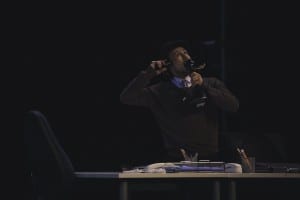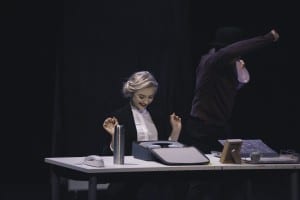Today our show idea took a big turn for the better! After having looked over our manifesto and the Arts Council England (ACE) funding policy, we decided to change who our show was aimed at and the kind of show we wanted to create. Whilst the ACE funding policy dictates that students creating shows as part of their course cannot receive funding, we decided to change our idea as part of following their funding guidelines. After taking part in their quiz to find out what kind of theatregoers we all were, we discovered we were all part of the audience segments that were “highly engaged” (Arts Council England, 2017) in the arts, such as ‘urban arts eclectics’ (Arts Council England, 2017). After looking through ACE’s five goals for arts and culture, we were particularly interested by “Goal 2: for everyone” (Arts Council England, 2017), which states that successful shows will show that “engagement levels have increased among those currently least engaged in arts and culture” (Arts Council England, 2017). Our goal from this point was to create a show that would actively engage the people who fell into the audience segments that were least engaged in the arts and theatre and show them contemporary theatre practices, such as physical theatre.

Changing our idea however, means that as props manager, I am faced with a difficult task, as a lot of our original ideas for props had now been changed completely. However, now our first scene consists of a silent film, I am able to still incorporate a lot of the props that have already been sourced into our new opening scene as they are from the same era we wanted to set our original show, such as the typewriter and candlestick telephone.

We still want to keep our original ideas, but the way we have decided to present them has changed. We have now decided to present a straight naturalistic play set in an office, following the lives of seven ordinary people but celebrate their individuality by allowing them to drift into the delusions of their own lives. We’ve began by introducing Michael, a character who’s delusion is a silent film that shows how he wants to be perceived as a hero who manages to save the ‘damsel in distress’ and she falls in love with him. However, it becomes clear that this girl in the office doesn’t have much time for him and he immediately comes back into reality.
In order to come up with the best props to dress the set and to show the characters personality, I asked our director Dwain Brown for ideas and suggestions and took away what he said to come up with some ideas. I looked at pictures of how offices were set up and what I really noticed is that they are all very similar without too much personality and I really wanted to emulate this to the best of my ability to highlight the changes in props and set when the delusions are taking place.

In terms of the props for the characters, Dwain gave me ideas of each character profile and as a group we came up with these ideas:
- Joanna : A stress ball/elastic band ball, to show an audience how worked up she gets as a result of the ‘war’ she has with Beth and a photograph of her father on her desk to show the importance she places on her family
- Louisa : A mug that says ‘World’s Best Boss’ to show how much she values her career and how people see her
- Beth : We decided on no personal props as she makes herself distant from everyone else due to her wanting to advance in her career and not stay in the office for very long
- Michael : Michael also didn’t have a personal prop as we wanted the focus of him to be all about Beth
- Simon: Simon has an apple that he eats during the lunch scene which is a deep red, to show his menacing nature. He casually eats this as he hurls insults at Michael and Tom
- Zoe: Zoe has a clipboard and a pen shaped like a flower to show her organisation and cutesy character traits.
- Tom: Tom has an engineering textbook in his toolbox that he reads to show his aspirations in life and that he is a character striving for better.
Works Cited:
Arts Council England (2017) Goal 2: for everyone. Available from http://www.artscouncil.org.uk/our-mission-and-strategy/goal-2-everyone [Accessed 20th March 2017].